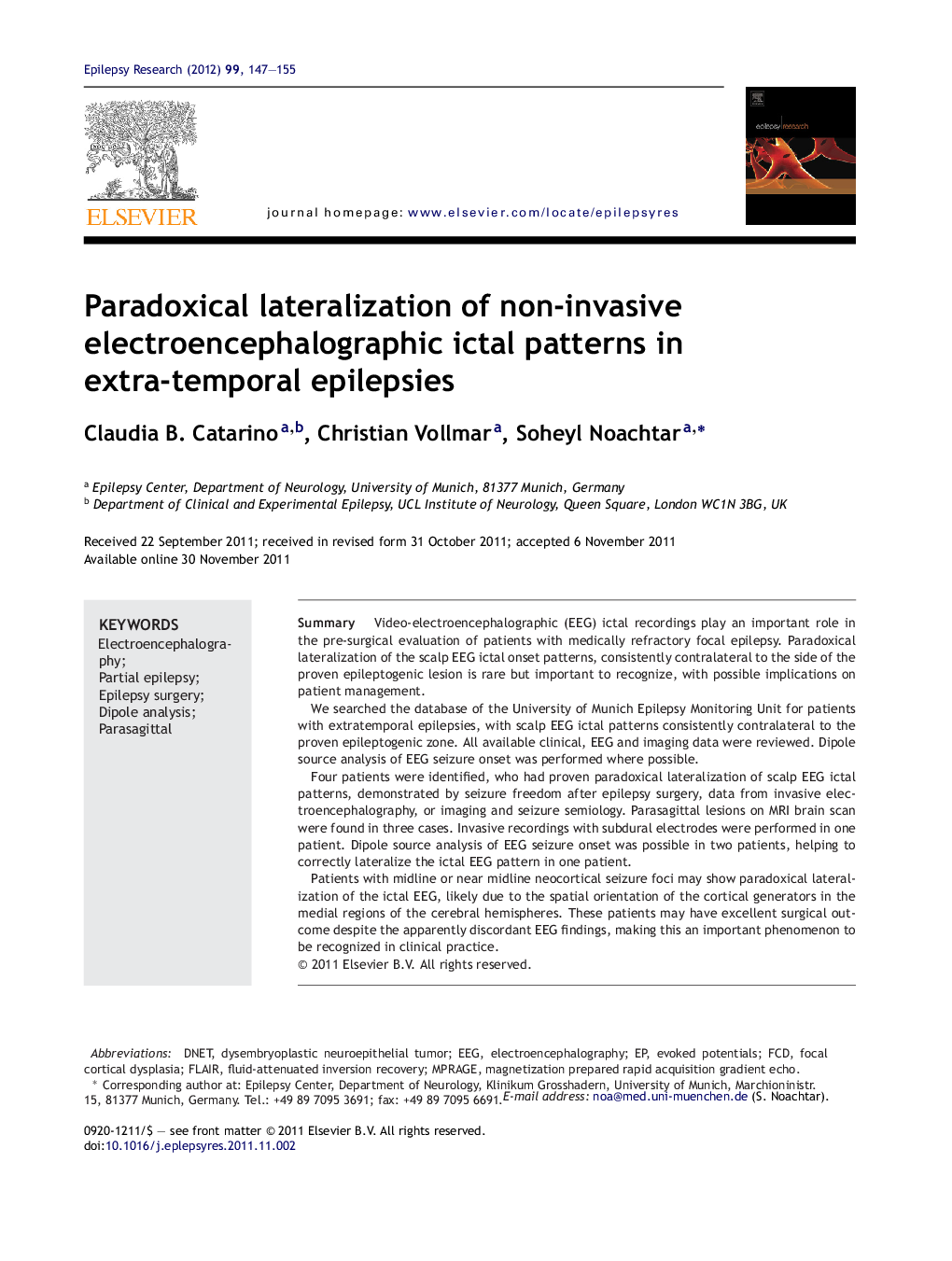| Article ID | Journal | Published Year | Pages | File Type |
|---|---|---|---|---|
| 3052447 | Epilepsy Research | 2012 | 9 Pages |
SummaryVideo-electroencephalographic (EEG) ictal recordings play an important role in the pre-surgical evaluation of patients with medically refractory focal epilepsy. Paradoxical lateralization of the scalp EEG ictal onset patterns, consistently contralateral to the side of the proven epileptogenic lesion is rare but important to recognize, with possible implications on patient management.We searched the database of the University of Munich Epilepsy Monitoring Unit for patients with extratemporal epilepsies, with scalp EEG ictal patterns consistently contralateral to the proven epileptogenic zone. All available clinical, EEG and imaging data were reviewed. Dipole source analysis of EEG seizure onset was performed where possible.Four patients were identified, who had proven paradoxical lateralization of scalp EEG ictal patterns, demonstrated by seizure freedom after epilepsy surgery, data from invasive electroencephalography, or imaging and seizure semiology. Parasagittal lesions on MRI brain scan were found in three cases. Invasive recordings with subdural electrodes were performed in one patient. Dipole source analysis of EEG seizure onset was possible in two patients, helping to correctly lateralize the ictal EEG pattern in one patient.Patients with midline or near midline neocortical seizure foci may show paradoxical lateralization of the ictal EEG, likely due to the spatial orientation of the cortical generators in the medial regions of the cerebral hemispheres. These patients may have excellent surgical outcome despite the apparently discordant EEG findings, making this an important phenomenon to be recognized in clinical practice.
